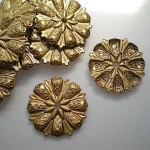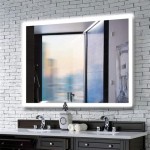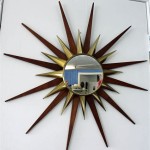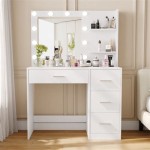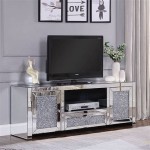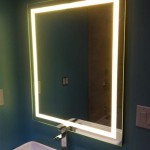Bathroom Mirrors: Reflecting Style and Functionality
Bathroom mirrors are essential components of any bathroom, serving both functional and aesthetic purposes. They provide the necessary reflection for daily grooming routines while also contributing significantly to the overall design and feel of the space. Choosing the right bathroom mirror involves considering factors such as size, shape, style, features, and installation methods.
Size is a crucial consideration when selecting a bathroom mirror. The mirror should be proportionate to the vanity and the overall size of the bathroom. A mirror that is too small can make the room feel cramped, while one that is too large can overwhelm the space. Generally, the mirror's width should not exceed the width of the vanity. However, in larger bathrooms, a broader mirror or multiple mirrors can create a sense of spaciousness.
Shape plays a significant role in the aesthetic appeal of a bathroom mirror. Traditional rectangular and square mirrors are versatile choices that complement various bathroom styles. Round and oval mirrors offer a softer, more contemporary look. Unique shapes, such as arched or geometric designs, can add a touch of personality and visual interest to the bathroom.
The style of the bathroom mirror should harmonize with the overall design aesthetic of the bathroom. For a modern bathroom, sleek, frameless mirrors or those with minimalist metal frames are popular choices. Traditional bathrooms benefit from ornate framed mirrors with decorative details. Rustic bathrooms can incorporate mirrors with wooden frames or unique, repurposed materials.
Modern bathroom mirrors often incorporate various features to enhance functionality and convenience. LED lighting is a popular feature, providing targeted illumination for grooming tasks and enhancing visibility. Integrated demisters prevent fogging, ensuring a clear reflection even after a hot shower. Magnifying mirrors provide a closer view for detailed tasks such as applying makeup or shaving. Smart mirrors, incorporating technology such as touchscreens and voice control, offer advanced features like displaying news, weather, and playing music.
Several installation methods are available for bathroom mirrors. Surface-mounted mirrors are attached directly to the wall, offering a straightforward installation process. Recessed mirrors are installed within the wall, creating a seamless and flush look. This method requires more complex installation but can save space and enhance the modern aesthetic. Some mirrors are designed to hang using wires or decorative brackets, adding a unique touch to the bathroom.
Frame materials significantly impact the style and durability of the bathroom mirror. Wooden frames offer a classic and warm look but require proper sealing to prevent moisture damage. Metal frames, such as stainless steel or aluminum, are durable and resistant to corrosion, making them suitable for humid environments. Plastic frames are a cost-effective option but may be less durable than metal or wood. Frameless mirrors offer a sleek and contemporary appearance, seamlessly integrating into modern bathroom designs.
Maintenance of bathroom mirrors is essential for preserving their appearance and functionality. Regular cleaning with a glass cleaner and a soft cloth can remove water spots and fingerprints. Avoid using abrasive cleaners, which can scratch the mirror surface. For mirrors with LED lighting or other electronic features, follow the manufacturer's instructions for cleaning and maintenance.
Budget is an important factor to consider when choosing a bathroom mirror. Basic, frameless mirrors are typically the most affordable option. Mirrors with additional features, such as LED lighting or demisters, will generally be more expensive. Ornate framed mirrors and custom-shaped mirrors can also command higher prices. Setting a budget beforehand can help narrow down the options and ensure the chosen mirror aligns with financial constraints.
The placement of the bathroom mirror should be carefully considered. The ideal height for a bathroom mirror is to position the center of the mirror at eye level for the average user. Adequate lighting around the mirror is crucial for grooming tasks. Consider a combination of overhead lighting and task lighting to eliminate shadows and ensure optimal visibility.
In addition to functionality, bathroom mirrors contribute significantly to the overall aesthetic of the space. They can be used to create an illusion of spaciousness in smaller bathrooms. Decorative mirrors can serve as focal points, adding personality and style to the room. The reflective surface of a mirror can also enhance the impact of other design elements, such as lighting and wall color.
When selecting a bathroom mirror, carefully consider the existing bathroom décor. The mirror's style, shape, and frame material should complement the overall design theme. Consider the color palette, textures, and materials used in the bathroom to ensure a cohesive and harmonious look. The mirror should integrate seamlessly with the existing elements, enhancing the overall aesthetic appeal of the bathroom.

Decorative Bathroom Mirrors 8 Advantages And Disadvantages

Diy Framed Bathroom Mirrors Living With Lady

Klajowp 36 In W X 24 H Small Rectangular Framed Wall Mounted Bathroom Vanity Mirror Black Rm01 6090 120 The Home Depot

20 Stylish Bathroom Mirror Ideas

Mirror Guide How To Choose A Bathroom Kohler

Homlux 36 In W X H Round Frameless Led Light With 3 Color And Anti Fog Wall Mounted Bathroom Vanity Mirror 27d7004792 The Home Depot

Bathroom And Vanity Mirrors Lighted Smart Framed More Kohler

Round Backlit Led Heated Bathroom Mirror 800mm Luna Better Bathrooms

The Best Bathroom Mirror Ideas For 2024 Decoholic

27 Dazzling Bathroom Mirror Ideas


